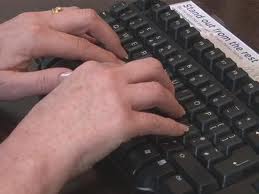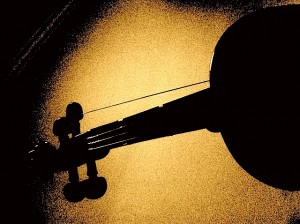For young students just beginning violin, there’s much to cover. Bowing problems can usually be fixed, but I find that it’s the left (violin) hand, that can make or break a violin journey. This short video covers the basics. You can download a hard copy by using the free instant download link at right.
Tag: Violin Lessons
Holy cow, yet another call today, a man hoping to start his 3 year old grandson on violin.
Okay, okay. I agree there are advantages to starting early. But…
Few people though consider the far greater risks of starting music lessons too early.
It takes five years for the average child to learn to cut in a straight line using scissors. Is playing the violin any simpler a task? And that’s not considering the focus, patience and intellectual skills required to play a musical instrument.
Drop the average three year old into a few months of lessons and you’ll often have one frustrated family. Progress will be difficult to discern. This sets up a negative mindset around the project, one which may be impossible to surmount later in life. Had the same student started at five years of age, he would likely catch up to the 3 year old within 6 months. And everyone, student included, will be much happier.
Sure, you can find a few outliers on YouTube. Like the 3 year old prodigy playing Vivaldi. But what you’re not seeing is behind the scenes: a razor focussed family support network built around that child. A practice regimen that doesn’t waver. And an inordinate amount of time on the project (to the exclusion of other activities) and a child that is far, far ahead of the bell curve.
Even if you are one of those outliers, you still must ask yourself: is this in the best interest of the child? Will the world be a better place and will your child be happier for this experience?
Remember that Violin is a long term project. It will still be around when your child is four or five. And she’ll likely devote the better part of a decade to achieve any level of mastery.
So what’s the rush?
Still, there’s much you can provide for your child before he is ready for structured lessons. Here are just a few ideas:
• Singing informally or in a group
• Classes that emphasize rhythm, movement and motor development
• Attending concerts in a variety of styles and venues
• Structured listening at home (Suzuki CDs are available to everyone)
All of this can start as early as in the womb! Your child’s love and devotion for music starts by modeling your own. There’s nothing wrong with starting actual lessons at five to seven years of age and beyond.
In a nutshell, give your young violinist a better than average chance for success. Provide the needed family support. Be an active participant in the learning process. Model your own love for music. Do all of this, and you can’t help but succeed in creating an Invincible Violinist in your own home.
If you find this information helpful, please share or tweet this page or post, using the buttons below. Thanks!

Flop that fiddle on your shoulder and put your fingers on the fingerboard. Ready to go, yes? Well, actually… no!
Right out of the cradle we’re pre-programmed to play the violin wrong. Our very first instinct actually works against us.
Hand a baby a rattle, and she grasps it. Hand a five year old a violin, and she does pretty much the same thing with her left (violin) hand. That grasping motion works great; it’s extremely powerful.
The only problem is that this type of power actually works against the violinist. What a violinist really needs is exactly the opposite thing, a delicate touch, freedom of movement and a high degree of finesse.
In the violin studio, even the teacher’s simple choice of a word can influence success or failure. I work hard to remove words such as “bow grip” from my vocabulary. Similarly we need to find the right word to describe how the violin hand approaches the instrument.

Touch Typing
I like the word “touch” as in touch typing. The touch typist on a modern keyboard uses a light, fast motion. His fingers are curved and his knuckles are high. Playing the violin well is amazingly much the same.
Playing the violin is much the same as typing an e-mail to a friend on your PCs keyboard.
The First Time Ever You Touch a Violin
Do this right the first time, and you’re off to a great start. Do it wrong, and you’ve got a bad habit. Minutes or seconds can establish the habit. It could take months to re-learn it the correct way.
Because a picture (or in this case a video) is worth one thousand words, I’m creating a video demonstration to help you get started. As always, this can work best under the supervision of a qualified teacher. So I’m not going to say “don’t try this at home” but then again, self-taught violinists are a rare breed indeed.
If you find any part of this unclear, please let me know. It’s my endeavor to make this the best it can be!
If you find this information helpful, please share or tweet this page or post, using the buttons below. Thanks!
Violin String Broke! Now What?
“OH NO! While tuning the violin I snapped a string. Can I fix it? Or does it go back to the violin shop?”
No need to panic. We can fix this! Click here to replace your snapped violin string.
Here are seven things you can do to prevent breaking strings prematurely and to minimize inconvenience when breaks occur:
1. As a violin parent, learn to tune the violin properly. The easiest way to break a string, especially an E string, is to tune it too high. Don’t ask your 5 year old student to perform this operation!
2. Before installing new strings, lubricate the 2 contact points at the bridge and nut of the violin with a small amount of pencil lead.
3. Be sure that your instrument has quality tuning pegs that operate smoothly. Pegs that slip make you tune the strings more frequently, adding stress and reducing their life.
4. When tuning, gradually raise the pitch of the string to the required note, but not more than a small amount above. On student violins, use the fine tuners to make small adjustments, in lieu of the tuning pegs, which can be more difficult to operate.
5. Use an electronic tuner when learning how to tune. Tuning by ear is risky, if you’re not trained in that approach.
6. Practice often, and tune at least once at the beginning of every practice session. A neglected violin is more likely to lose its tuning by a large amount.
7. Purchase quality strings that are correctly sized for your instrument. Keep a spare set in your case, and perhaps more than one spare on the E string.
Except from: Master Sequence for young beginner students.
1. Violin “setup” correctly and comfortable on the collar bone. This will be more fully described in the InvicibleViolinist.com Master Sequence.
2. Learn to properly position the left “violin” hand around the neck and fingerboard.
This is probably the source of more “screw ups” than any other element of early violin technique. If you focus on mastering the left hand early in the game, everything that follows is relatively simple.
I created this exercise because this hand-violin relationship is much easier to learn when broken down in steps. When (and only when) your student can perform this simple movement in good form, do you move to the next step.
This “umbrella” of fingers over the fingerboard and hand astride the neck is simple to perform with the violin in a guitar like position. Note the elevated angle of the scroll.
3. Finally, move the violin with (hand and arm already in perfect position) into playing position. Once in position, our Master Sequence Practice Angel will test for correct posture and freedom of movement.
—
If you find this information helpful, please share or tweet this page or post, using the buttons below. Thanks!
